Did Anything So Great Ever Happen?
 Stories of gods and demi-gods are found in cultures around the world. Typically, there is a major, powerful deity who has a spouse and children. Those divine children may also have spouses, or they may befriend and have children with humans. The grandchildren of the great gods, those born of a human and a divine parent, are known as demi-gods (half-gods).
Stories of gods and demi-gods are found in cultures around the world. Typically, there is a major, powerful deity who has a spouse and children. Those divine children may also have spouses, or they may befriend and have children with humans. The grandchildren of the great gods, those born of a human and a divine parent, are known as demi-gods (half-gods).
Stories are told of these gods and demi-gods, as well as of their friends and enemies. The stories aim to explain the world in which we live and the reasons people behave as they do.
The gods and demi-gods act in very human ways, loving sometimes, hating sometimes, betraying each other, or tricking each other. A number of charming sets of stories of the ancient gods set in contemporary society has been told by Rick Riordan. His stories are based on Greek, Roman, Norse, and Egyptian deities who are still active in modern times, having children with humans and carrying out their battles and rivalries with each other and with the forces that preceded them. All are set in places that have similar importance today as did the ones from ancient cultures. My family and I have very much enjoyed reading these stories and seeing what places in contemporary America might be the location of Olympus, the gates to Hades, the city of Rome, and other ancient mystical places.
Our own Judeo-Christian heritage has grown out of a different experience. As the Israelites prepared to enter the promised land, crossing the Jordan River into the land they were to conquer and claim as their own, Moses spoke to them of their unique history and relationship with their God. “Ask now of the days of old, before your time, ever since God created man upon the earth … Did anything so great ever happen before?” (Deut 4:32-33, 39040)
What was this great thing that had happened? Their God took them from among the population of another nation, led them out with many signs and wonders, defeated that nation (the Egyptians), led them through the desert, cared for their needs, and gave them a set of rules and commandments by which to live. Finally, their God was giving them a new land in which to live and prosper with their children. This was unique. Their God was not many gods. Their God was one being and entered into a very special relationship of love and care. No other gods were equivalent, nor was any other “deity” to be worshipped. All powers were subject to their God.
To this day, the descendants of Abraham, Jews and Arabs alike, along with Christians and Muslims from around the world, believe in and worship one God. Jesus, born into Jewish culture and family, grew up learning of the wonders of God’s relationship with his people. He was a normal man, from a normal family, and in the course of his life, his nature as both human and divine came to be known. The God of Abraham, Isaac, and Jacob became a human in Jesus. Jesus, the Word of God, the Logos, was born into a human family, grew up in a very normal way, and following his baptism in the Jordan River, began to teach and preach. He learned much along the way during his public life. He learned from men and women with whom he interacted. He learned from non-Jews as well as from other Jewish people. He spoke of God’s Kingdom and what it meant in reality for humans.
Powerful people were threatened by Jesus and his teaching. His death should have ended it all, but with the Resurrection, everything changed. Recognition of the divine nature of the man Jesus became the hallmark that broadened even further the amazing things God has done. “Did anything so great ever happen before?” Did God ever before enter into human life so intimately, sharing our joys and sorrows, our triumphs and our defeats, our health and our suffering and death?
St. Paul spoke to the people of Rome about the relationship between humans and God. Those people who have believed and are now led by the Spirit of God become children of God. They are not slaves, subject to every whim of a master. They are God’s little girls and boys, God’s children, brothers and sisters of Jesus, the firstborn. They are loved deeply by the Father and join in glory with their God. This is truly unique. (Rom 8:14-17)
Making it all even more marvelous, this relationship with the Father is not limited to the people originally chosen for a relationship with him. It took a while for the community to realize the full wonder of what God was doing, but they/we got there.
St. Matthew closed his account of Jesus’ life with the story of Jesus commissioning his followers to go out and tell the world what they had seen and heard from him. On a mountaintop in Galilee, the eleven disciples were with him when he appeared. He approached the group, who were not totally sure what to think of his coming to them there, but he had a message, a commission for them. “Go… and make disciples of all nations, baptizing them in the name of the Father, and of the Son, and of the Holy Spirit.” (Mt 28:16-20)
This trinitarian understanding of God, the one God of the tradition, is seen as including much more than one individual human’s personhood. God is parent/creator. God is brother/redeemer, God is the Spirit of Love, the Holy Breath of God. God has been described as a great dance of love whirling through all of reality.
It’s really a much more complex mystery than we have words to express. God comes to us in many ways and many places. We see God’s face in the love of family and friends. But also in the kindness of strangers and the wonders of all creation. We feel the breath of love, patience, forgiveness, and joy that bubbles up at the most unexpected moments in our lives.
“Did anything so great ever happen before?”
We celebrate the Holy Trinity today and through the week to come. May we rejoice in the wonder of our God who enters into our lives in so many and such marvelous ways. We ask that our eyes be opened to see and hear the presence of God among us. We prepare for the day we will see our God in glory.
Peace and joy be with you, today and always, as we celebrate the wonder of our God!
Readings for the Solemnity of the Most Holy Trinity – Cycle B
Illustration – The Shield of Faith – Background Information
Read More



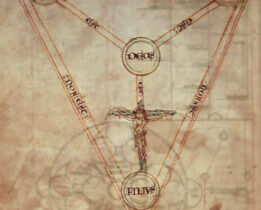
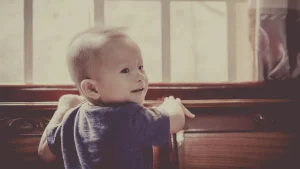
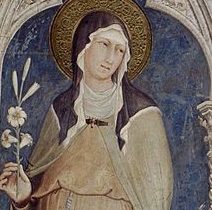


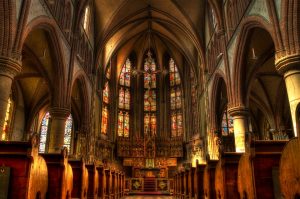




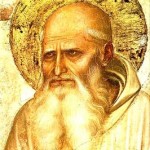


 Darwin’s Tortoises on the Galapagos Islands
Darwin’s Tortoises on the Galapagos Islands





